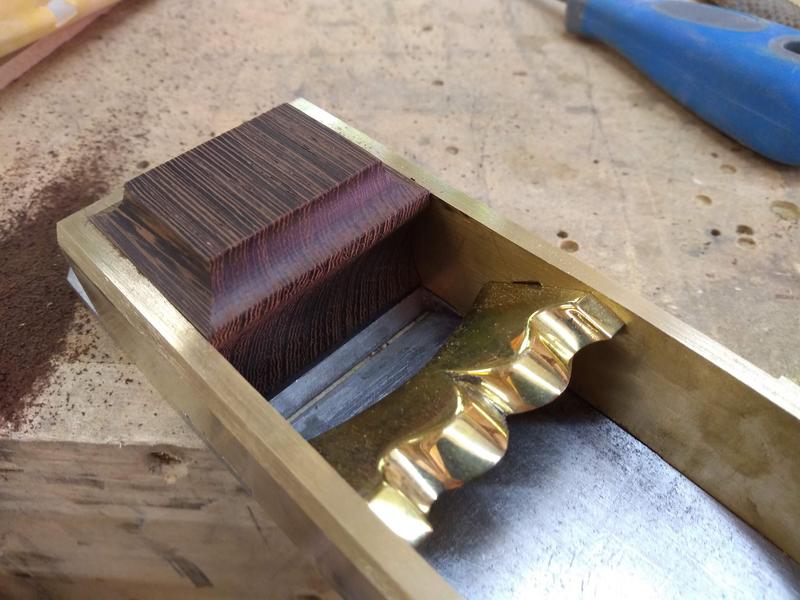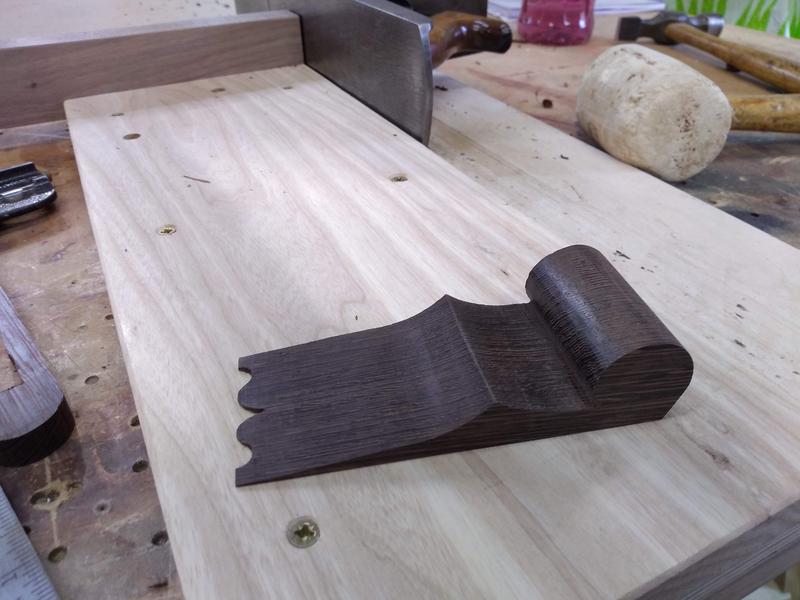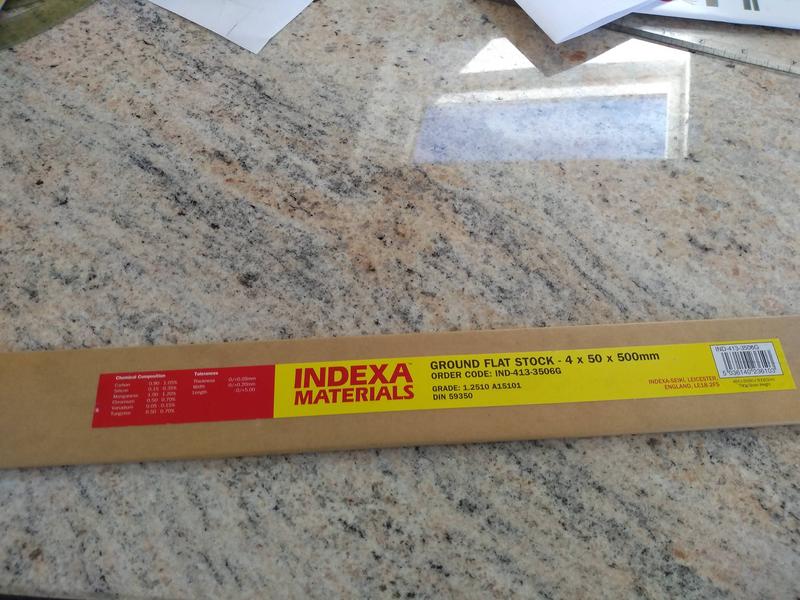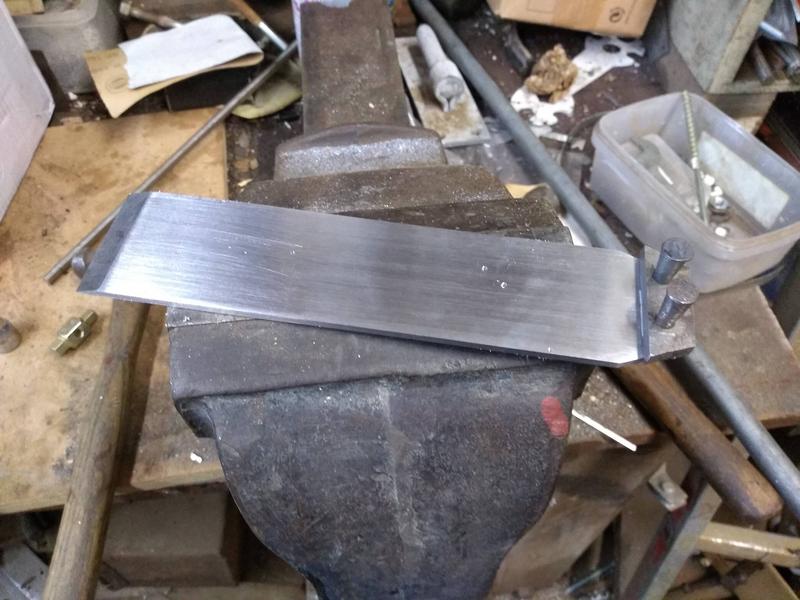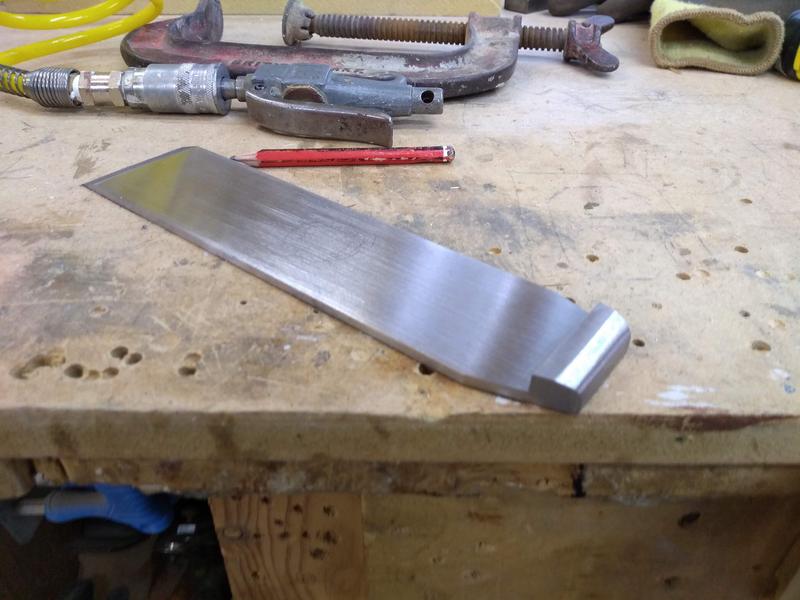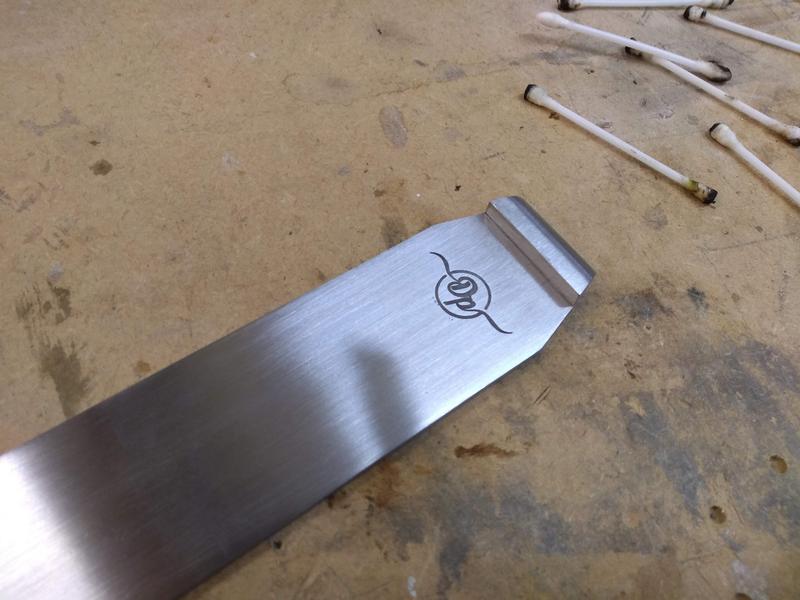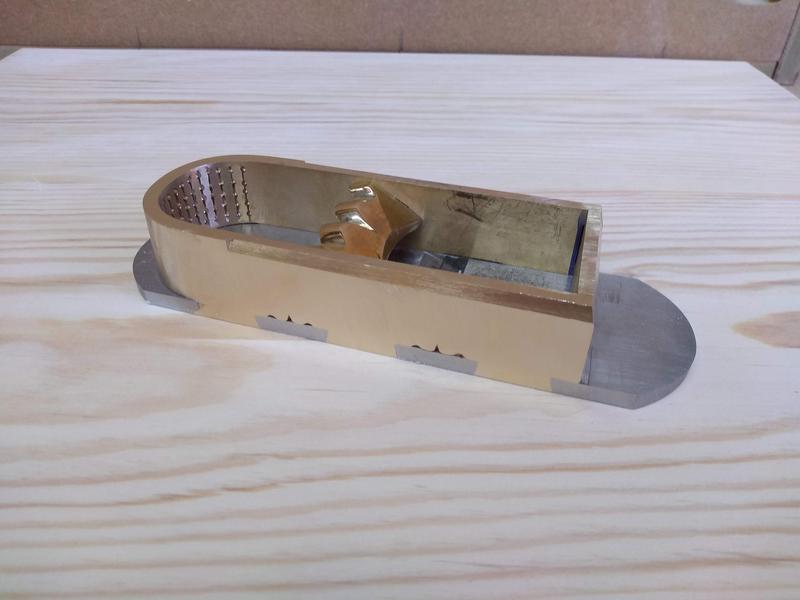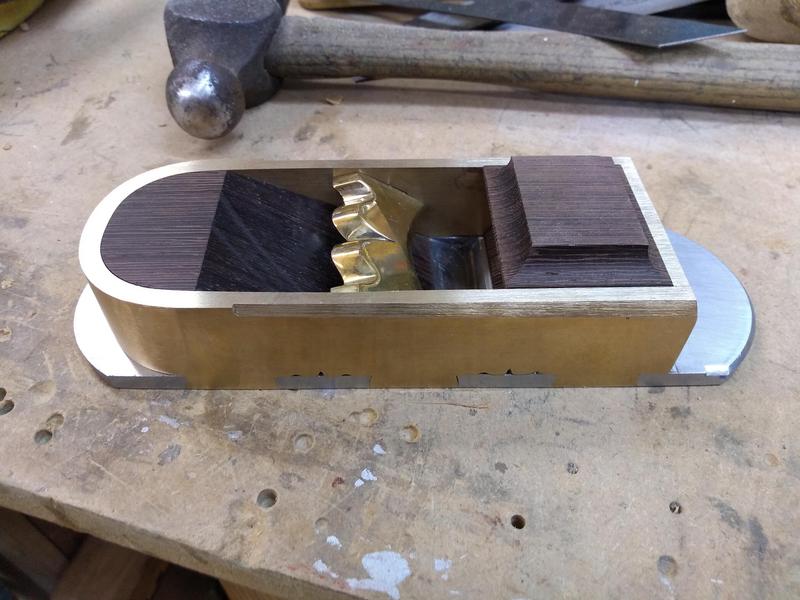I've made a start on the blade. It's tedious work, endless hours of flattening and sanding.
I decided to have a go at a snecked blade, I was unsure if bespoke makers mill down a thick piece of steel to form the sneck in one piece of steel or if it is two pieces joined together.
I had no way of doing the former easily so opted to pein the sneck onto the blade
I was pleased with how it turned out, still a lot more filing and sanding to do.
but before that I etched my mark onto it
This blade is narrower than the last so I asked my friend if he could laser me some new stencils which he kindly did.
I wasn't sure how well it would turn out as the stencil was half the size of the last one but thankfully it came out really well again so I'm pleased with that.
And again for any one interested part 4 has just gone up.
In this part I start to assemble and pein the body of the plane together.
I also make a start on cutting the mouth and blade bed into the sole.
[youtube]_fmTWtGp0VQ[/youtube]





